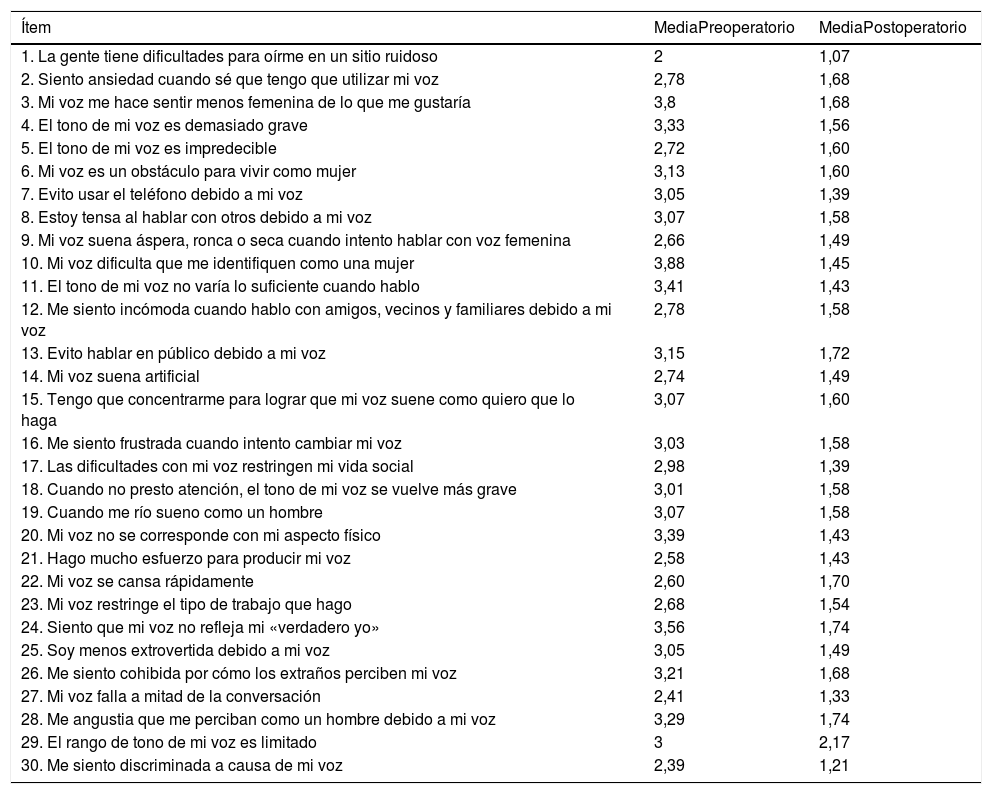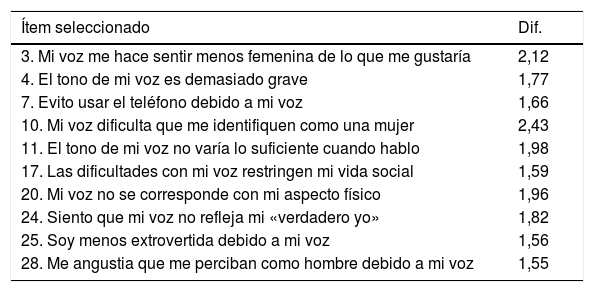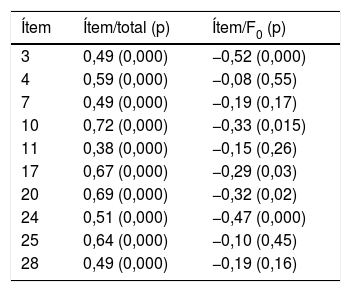El objetivo de este estudio es crear y validar un cuestionario abreviado de la versión española del Transsexual Voice Questionnaire for Male-to-Female Transsexuals (VeTVQMtF).
MetodologíaEl estudio fue dirigido por 2 hospitales de referencia para la feminización quirúrgica de la voz y por un departamento universitario de psicología y rehabilitación vocal, todos ellos en España.
Material y métodosSe realizó un estudio prospectivo de 51 mujeres transexuales a las que se les intervino de feminización quirúrgica de la voz entre enero 2017 y diciembre 2018. La VeTVQMtF fue rellenada por las mujeres transexuales antes y después de la cirugía y los 10 ítems de este cuestionario que más variaron fueron seleccionados por un grupo de expertos en feminización de la voz, para desarrollar la versión abreviada de la VeTVQMtF (VeTVQMtF-10). Se estudió la correlación entre la puntuación total y la puntuación de cada ítem en la VeTVQMtF y en la VeTVQMtF-10. Se analizó la consistencia interna de la VeTVQMtF-10.
ResultadosSe encontró una buena correlación entre los 2 cuestionarios (coeficiente de Pearson >0,90), una buena correlación entre la puntuación total y la puntuación de cada ítem de la VeTVQMtF-10 y una correlación negativa entre la de la VeTVQMtF y la frecuencia fundamental de la voz tras la cirugía. El α Cronbach fue de 0,79.
ConclusiónLa VeTVQMtF-10 es una versión abreviada válida de la VeTVQMtF y podría usarse para valorar la calidad de vida relacionada con la voz en mujeres transexuales en el idioma español.
The aim of this study was to create and validate an abbreviated version of the Spanish Transsexual Voice Questionnaire for Male-to-Female Transsexuals (SvTVQMtF).
SettingThe study was conducted by two referral hospitals for voice feminization surgery and by a university department of psychology and speech therapy, all in Spain.
Subjects and methodsWe prospectively studied 51 male-to-female transsexuals who underwent voice feminization surgery between January 2017 and December 2018. The SvTVQMtF was completed before and after surgery, and the 10 items with the greatest variation were selected by clinical consensus of an expert panel to develop the short version of the SvTVQMtF (SvTVQMtF-10). The correlation between the total score and the score for each item on the SvTVQMtF and the SvTVQMtF-10 was studied. The internal consistency of the SvTVQMtF-10 was analysed.
ResultsGood correlation (Pearson coefficient above .90) was found between the two questionnaires. A significant correlation was found between the total SvTVQMtF-10 score and the score for each item. A significant negative correlation was found between the SvTVQMtF and fundamental frequency after voice feminization surgery. Cronbach's α was .79.
ConclusionThe SvTVQMtF-10 is a valid short version of the SvTVQMtF and can be used to quantify voice-related quality of life in MtF transsexuals.








